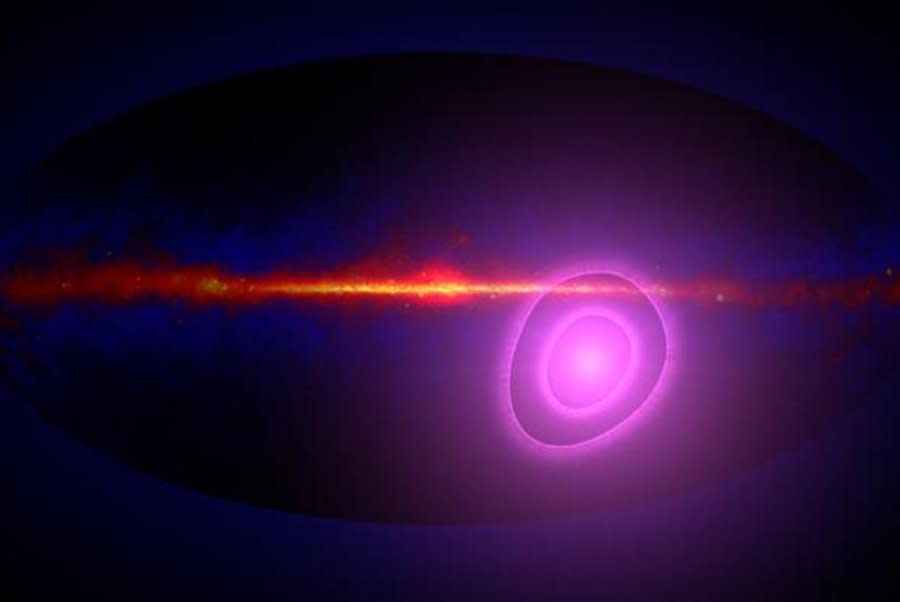NASA's Fermi telescope discovers unknown gamma-ray pattern beyond our galaxy

Jan. 11 (UPI) -- Astronomers studying gamma rays said they have found a mysterious phenomenon just outside of the Milky Way.
Researchers published the findings in study Wednesday in The Astrophysical Journal Letters. Alexander Kashlinsky, a cosmologist at the University of Maryland and NASA's Goddard Space Flight Center in Greenbelt presented the research at the 243rd meeting of the American Astronomical Society in New Orleans.
Kashlinsky's team originally was searching for a gamma-ray signal related to the cosmic microwave background, the oldest light in the universe, to determine whether or not its signal pattern is relative to the motion of our solar system.
What they discovered, however, was a completely separate signal possibly originating from a yet-unidentified cosmic event.
"It is a completely serendipitous discovery," Kashlinsky said. "We found a much stronger signal, and in a different part of the sky, than the one we were looking for."
Scientists say the CMB originated soon after the Big Bang, when the hot, expanding universe cooled enough to form the first atoms. The subsequent burst of light was stretched by the expansion of the universe over 13 billion years and was first detected in the form of faint microwaves in 1965.
Astronomers in the '70s discovered the CMB had a "dipole" structure, meaning it has two ends with opposite charges. The CMB was found to be sightly hotter with more microwaves than average toward the constellation Leo, and colder by the same amount with fewer microwaves than average in the opposite direction.
Scientists generally regard this dipole pattern as a result of the movement of our solar system relative to the CMB, but the research team hoped to confirm or challenge that idea by studying other forms of light, such as gamma rays, for a similar pattern.
"Such a measurement is important because a disagreement with the size and direction of the CMB dipole could provide us with a glimpse into physical processes operating in the very early universe, potentially back to when it was less than a trillionth of a second old," said co-author Fernando Atrio-Barandela, a professor of theoretical physics at the University of Salamanca in Spain.
The team combined 13 years of gamma ray data from NASA's Fermi Large Area Telescope to analyze the cosmic gamma-ray background. The researchers found a gamma-ray dipole, but its peak was located in the southern sky, far from the CMB's, and had a much higher magnitude than the movement of the solar system could account for.
"While it is not what we were looking for, we suspect it may be related to a similar feature reported for the highest-energy cosmic rays," said co-author Chris Shrader, an astrophysicist at the Catholic University of America in Washington and Goddard.
This similar feature was first observed by the Pierre Auger Observatory in Argentina in 2017. The observatory discovered a dipole peak of ultrahigh-energy cosmic rays in a similar location and magnitude to the gamma-ray peak.
The scientists suspect the two phenomena are linked and that there could be an unidentified source producing both the gamma rays and the ultrahigh-energy particles, but the investigation is still ongoing.

